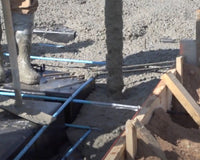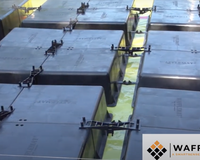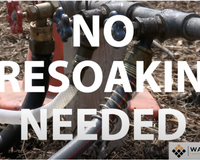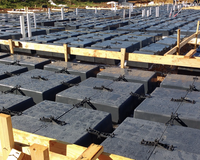The development strategy created by Century 22 Communities is based on the belief that a home, and its surrounding community, should be designed and constructed to last 100 years. In order to achieve the 100-year sustainability goal, C22C has gone to great lengths to analyze and re-design all the systems and components of a typical home to improve the reliability and reduce life-cycle cost.
When we applied our “re-thinking” process to the house foundation, the challenge was to find a better way to achieve sustainability regardless of soils conditions, as every builder knows a poorly designed foundation will eventually create major problems throughout the structure. Therefore, our 100-year house needed to have a “100-year foundation.”
Two years ago, we began considering a large development opportunity in El Paso, Texas. El Paso is in an area having moderately expansive soil conditions, and we knew the traditional, and most common, solution for unstable soil conditions in the Southwest was to use a post-tensioned ribbed slab. However, we also knew that post-tensioned ribbed foundations in the region have been experiencing many failures.
It was obvious our foundations would require upgrades in design, and that the traditional slab-on-grade approach would fall short of meeting our 100-year sustainability objective -- even though whatever new design approach we chose to improve upon the traditional foundation design method was bound to increase cost. However, we felt the additional cost was unavoidable if we were to achieve higher foundation reliability.
We reviewed the Wafflemat foundation-forming system distributed by Wafflemat Foundations. A post-tensioned Wafflemat foundation is designed to handle extremely expansive soil conditions. The “upside down egg crate” or “waffle” concept allows the foundation to resist uplifting caused by the movement of the underlying soils by providing “extra room.” We concluded we would pay for this slightly more expensive approach because we would receive higher assurance our foundations would be sustainable, and meet our 100-year goal.
After working closely with Wafflemat Foundations to refine our design and produce detailed cost estimates, we came to an amazing discovery: A Wafflemat Foundation not only improved our foundations, but also reduced our costs! How could something be better and cost less at the same time?
Comparing the total cost of a Wafflemat Foundation to the cost of a traditional post-tensioned ribbed foundation (the solution promoted by the Post-Tensioning Institute), we realized the additional, unanticipated savings described below:
General Earthwork - We performed far less earthwork to prepare the Wafflemat “pad.” We also could ignore the need to remove poor soil, and then back-fill/recompact with imported soil.
Trenching for Footers - We eliminated trenching for footers in all but the most highly expansive soils.
Concrete - We reduced the amount of concrete required for the overall foundation by up to 35%.
Water and Sewer Underslab Feeds - We simplified the installation of buried utility lines under the foundation by eliminating deep footers.
When we tallied the total first cost of the Wafflemat Foundation (taking into account all the savings in materials, labor, and equipment, and the added cost of the Waffleboxes), we concluded Wafflemat would not be more expensive. In fact, we concluded that in moderate to high production building situations, the Wafflemat System would usually cost less!
We worked out detailed cost estimates for a Wafflemat post-tensioned foundation, a post-tensioned ribbed foundation, and a rebar-reinforced ribbed foundation of the same size (2,200 sf) and same structural strength. Compared to the Wafflemat post-tensioned foundation, the post-tensioned ribbed foundation had a 12% higher cost, and the rebar- reinforced ribbed foundation a 24% higher cost.





